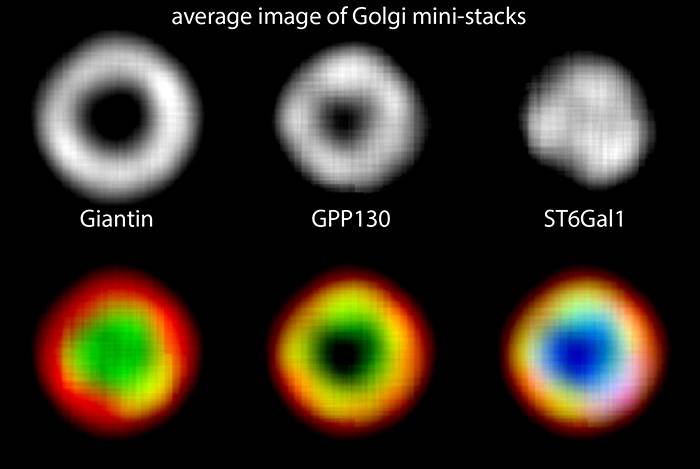Membrane Trafficking Laboratory

DESCRIPTION OF LAB RESEARCH WORK

In eukaryotes, the coordinated transport of a large quantity of materials is through a membrane carrier mediated process called the membrane trafficking. The membrane trafficking is critical for the structure and function of subcellular organelles but
it is still unclear how this important process works. Our lab aims to understand the molecular and cellular mechanism of the membrane trafficking at the Golgi and cilium.
LAB MEMBERS
 | LEAD PI
Lu Lei Associate Professor Email: lulei@ntu.edu.sg Phone:(65) 6592 2591 Office: SBS-03N-18 Lab webpage |
 | Divyanshu Mahajan
Senior Research Fellow Email: mdivyanshu@ntu.edu.sg |
 | Wong Jing Xue| Email: jingxue.wong@ntu.edu.sg |
 | Chia Hui Min Email: huimin.chia@ntu.edu.sg |
CURRENT PROJECTS
 |  |
1. Golgi Transport
The Golgi complex consists of a series of tightly stacked membrane sacs. It plays important roles in the secretory and endocytic trafficking pathways. How it organizes
and works at the molecular and cellular level is still unclear and under heated debate. Our lab focuses on two questions: 1) the molecular organization of the Golgi and 2) the regulation of the Golgi trafficking.
Our lab focuses on two questions:
A. The Molecular Organization of the Golgi
The conventional method for sub-Golgi localization is through the immuno-electron-microscopy, which is not only tedious and expensive but also requires extensive training. We developed an imaging-based super-resolution tool (GLIM) to quantitatively
localize a Golgi protein at the nanometer resolution (Tie et al., Mol. Biol. Cell, 2016). GLIM utilizes the conventional microscopy to rapidly achieve an axial (cis-trans) resolution better than the immuno-electron-microscopy. We introduced a coordinate
system for systematic localization of Golgi proteins. GLIM can reveal in real time the sub-Golgi transport of cargos, a feat that no other tools can achieve now. We provided clear quantitative data demonstrating that secretory cargos exit the Golgi
at the trans instead of the trans-Golgi network, challenging the conventional view that the TGN is the Golgi exit site.
In addition to the tool for the axial Golgi localization, we also developed the Golgi-averaging tools for the quantitative lateral localization of a Golgi protein (Tie et al., elife, 2018). We reported the concentric localization of various
Golgi resident proteins and revealed the molecular organization of the Golgi, whereby enzymes are at the cisternal interior while trafficking machinery components are at the rim. The movement of secretory cargos within the Golgi cisternal membrane
can be visualized in real time. With the aid of our newly developed tools, it is now possible to quantitatively study the organization of the Golgi systematically.
B. The Regulation of the Golgi Trafficking
How the Golgi membrane trafficking is regulated is currently poorly understood. We found that the endosome-to-Golgi trafficking is promoted by the sufficiency of amino acids and inhibited by the starvation. We have identified a mechanistic connection
between the amino acid signaling and the endocytic trafficking, whereby SLC38A9 and v-ATPase sense amino acids and Ragulator functions as a guanine nucleotide exchange factor to activate Arl5, which, together with GARP, a tethering factor, probably
facilitates the endosome-to-Golgi trafficking. The endosome-to-Golgi trafficking has been established to regulate many physiological and pathological processes, such as embryonic development, toxin invasion, cellular homeostasis and neurological diseases.
Our discovery therefore implies that the nutrient probably can modulate the progression of diseases.
2. Ciliary Targeting
The ciliary membrane is an extension of the plasma membrane but it has a unique enrichment of resident proteins for its sensory functions. Our lab is studying how ciliary residents are targeted to the cilium.
3. Imaging tool development
We are also interested in developing image-based quantitative tools for our study of the Golgi and cilium.
PUBLICATIONS
- Sun, X., Tie, H.C., Chen, B. and Lu, L. (2020) Glycans function as a Golgi export signal to promote the constitutive exocytic trafficking. J. Biol. Chem. (accepted).
- Mahajan D, Tie HC, Chen B* and Lu L. (2019) Dopey1- Mon2 complex binds to dual-lipids and recruits kinesin-1 for membrane trafficking. Nature Commun. 10:3218.
- Tie, H.C., Ludwig, A., Sandin, S. and Lu, L. (2018) The spatial separation of processing and transport functions to the interior and periphery of the Golgi stack. elife 7:e41301.
- Shi, M., Chen, B., Mahajan, D., Boh, B.K., Zhou, Y., Dutta, B., Tie, H.C., Sze, S.K., Wu, G. and Lu, L. (2018) Amino acids stimulate the endosome-to-Golgi trafficking through Ragulator and small GTPase Arl5. Nat. Commun. 9:4987. (&: equal contribution)
- Lu, L. and Madugula, V. (2017) Mechanisms of ciliary targeting — entering importins and Rabs. Cell. Mol. Life Sci. 75(4):597-606.
- Tie, H.C., Madugula, V. and Lu, L. (2016) The development of a single molecule fluorescence standard and its application in estimating the stoichiometry of the nuclear pore complex. Biochem. Biophys. Res. Com. 478(4):1694-1699. (&: equal contribution)
- Madugula, V. and Lu, L. (2016) A ternary complex comprising transportin1, Rab8 and the ciliary targeting signal directs proteins to ciliary membranes. J. Cell Sci. 129(20):3922-3934. (Winner of 2016 JCS paper prize)
- Tie, H.C., Mahajan, D., Chen, B., Cheng, L., VonDongen, A. and Lu, L. (2016) A novel imaging method for quantitative Golgi localization reveals differential intra-Golgi trafficking of secretory cargos. Mol. Biol. Cell 27: 848-861. (cover image)
- Lu, L. and Hong. W. (2014) (review) From the endosome to the trans-Golgi network. Semin. Cell. Dev. Biol. 31:30-39.
- Zhou, Y., Hong, W. and Lu, L. (2013) Imaging beadsretained prey assay for rapid and quantitative proteinprotein interaction. Plos One# 8: e59727

